The woman who would become known as Aunty Fay Carter,a champion of her people,came into the world on New Year’s Day,1935,at Echuca Hospital.
The Yorta Yorta and Dja Dja Wurrung baby was not born in the maternity ward,however.
That was reserved for white women.
Still,baby Fay’s mother,Iris Beranice Nelsen,was not consigned to the hospital’s verandah,either,which was as far as other Aboriginal women got when they came to give birth those days.
Iris Nelsen’s mother worked as a cook at the hospital,and her father was employed between shearing jobs as a hospital laundryman.
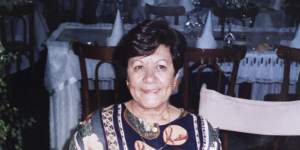
Aunty Fay Carter in 1994.Supplied
The matron,according to Fay’s sister Marlene Burchill,had a soft spot for the family and saw to it that the birth took place in what was known as the hospital’s “blue room”,which was a pleasant-enough ward just off the verandah.
Perhaps it was the earliest intimation that this Aboriginal child was marked out for a special life.
Eighty-nine years later,she is gone,having achieved more than anyone might have predicted for a child of a time and place that offered precious little promise for Aboriginal people.
There will be a funeral in Melbourne on Tuesday that you can be sure will be overflowing with those giving thanks for her work,and a burial on Wednesday in Echuca,where she will be reunited with the spirit of her mother and other deceased members of her family.
Aunty Fay Carter – Aunty is an honorific granted to respected Elders – died last week in a nursing home in Melbourne that she helped establish more than 30 years ago as a “safe place” for Aboriginal Elders.
She was among community leaders who lobbied for land and funds to establish what is known as the Aboriginal Community Elders Service,and spent 16 years managing the organisation,even foregoing months of salary when money was tight to ensure the nursing home and associated hostel survived.
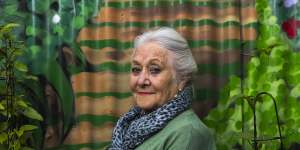
Marlene Burchill,Fay Carter’s younger sister. “Anyone with problems went to Fay,” she says. “I called her my second mother.”Chris Hopkins
Among her numerous other roles over 40 years,she was a founding member of the first women’s refuge for Aboriginal women in Australia.
And she was chair for a decade of the Victorian Aboriginal Child Care Agency,helping draft the principle that governs child protection services in Victoria.
It requires no stretch to imagine where the idea of a dignified safe place for elders might have come from. Or a women’s refuge. Or the protection of Aboriginal children.
These were all themes – call them dreams – that were denied the community that surrounded her as she grew up.
Fay spent much of her childhood and early youth being raised by her grandmother,Priscilla Nelsen,in a tin shack on a flood plain outside Mooroopna,near Shepparton.
Her parents,caught up in cycles of seasonal work to survive,simply couldn’t care for all their children in their own home.
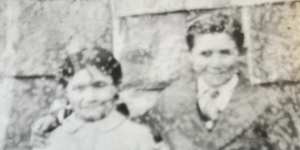
Fay and her brother Dempsey,in a photo believed to have been taken near a humpy on The Flats.Supplied
“Nanny” Nelsen gathered children to her care on the floodplain,an encampment known as The Flats,where Aboriginal families lived in a variety of tents,hessian-walled humpies and tin shacks.
Despite having to shift camp to higher ground each time the Goulburn River flooded – to a place called Daish’s Paddock,which was the local shire’s rubbish tip – “Nanny” raised 20 children,including eight of her own.
Regardless of floods and hardship and poverty,the Aboriginal people of The Flats preferred the place to their previous existence on the Cummeragunja Mission Station up north on the Murray River near Barmah,about 33 kilometres from Echuca.
The mission had once thrived when Aboriginal people were permitted to farm their own small allotments.
But under harsh new laws introduced in the early part of the 20th century,the Aboriginal Protection Board stripped the limited freedoms and farming income previously enjoyed by the people of Cummeragunja. The mission fell into neglect;many children were removed,destroying families;and disease – including tuberculosis – took its toll.
In 1939,the people of Cummeragunja,unable to bear it any more,famously walked off the mission.
Many found their way to The Flats of Mooroopna,where they could exercise at least a measure of freedom,build their own huts,fish the river and collect birds’ eggs for food.
Among those who walked off were four-year-old Fay’s family. And through the complications of life,the child and her brother Dempsey ended up in the care of their “Nanny”.
The grandmother ran a tight ship. She kept her crowded little place spotlessly clean,her family remembers,forever scrubbing the dirt floor,before she finally got a housing commission home in Mooroopna.
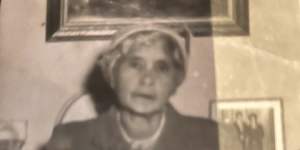
Nanny McCrae,who raised Fay Carter until the age of 15.Supplied
“Government people came and took people’s children away if their homes weren’t perfect,″ Marlene says. “Nan’s house had to be the best.”
And through the years,“Nanny” recognised that her grandchild,Fay,was gifted.
She made sure the child attended school,and managed to secure dancing lessons for her:ballet,tap and Highland. Working with a little Singer sewing machine,“Nanny” made all the outfits Fay needed for performing.
A ballet teacher wanted to take Fay to Melbourne for more training,and spoke of the possibility that she could dance in London.
“Nanny” refused. She could not bear the idea that her grandchild could be taken from her.
Aged 15,Fay finally returned to the care of her parents,who had settled in Echuca.
Her sister Marlene said she brought “joy and delight” to the household.
Her schooling paid off,though she went no further than grade nine. Her mother took her to the Echuca “Bargain Basement” shop,telling the manager her daughter was clever with numbers.
She won a position as clerical assistant.
She is said to be the first Aboriginal person to work in retail in the whole area. Later,she worked in a fruit and vegetable general store.
Fay,still in her mid-teens,was seen as reliable and strong.
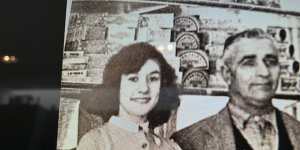
Fay Carter photographed at work in Echuca.Supplied
“Anyone with problems went to Fay. I called her my second mother. She was always so organised,and so popular with everyone,not just Aboriginal people,” Marlene says.
“You could say she crossed the racial barrier and brought her family along with her.”
The family home in Echuca became a hub for Aboriginal people needing assistance (“us children would give up our beds to people who were sick”) and to revered elders who came to socialise.
“Doug Nicholls[Sir Douglas Nicholls,pastor,footballer,Aboriginal activist,and,for a short period in the 1970s,Governor of South Australia] came to our place;Harold Blair[activist and Australia’s first Aboriginal opera singer] stayed with us. We had amazing elders,and we were related to so many families,” says Marlene.
Indeed,Marlene – who is the Aboriginal Elder in Residence at the Royal Melbourne Hospital,offering all sorts of support to Aboriginal patients – says that “just about every Aboriginal person who comes in,I’m related to”.
Fay married Leslie Carter in 1954,aged 18. They established a service station and ran several successful businesses and had two children,Rodney and Wendy.
In 1972,the family moved to Melbourne.
It was there that Fay embraced Aboriginal causes with the sort of vigour her grandmother had displayed in bringing up 20 children.
She became a field officer with the Aborigines Advancement League,studied for qualification as a welfare officer and gained a Diploma in Community Development.
During the following 40 years,she seemed never to have a spare moment away from projects designed to keep Aboriginal people safe and connected.
She was president for five years of the Victorian Aborigines and Islander Day Observance Committee (NAIDOC) and served two terms as an elected councillor of the Aboriginal and Torres Strait Islander Commission.
Even after retiring at 72,she took part in long negotiations to help achieve a native title settlement that recognised the Dja Dja Wurrung people as traditional owners of land in central Victoria.
She knew from her experience that white Australia couldn’t be relied upon. Aboriginal people like her had to help each other if things were to get better – just the way her grandmother faced life all those years ago on the floodplain known as The Flats,really.
Our Breaking News Alertwillnotify you of significant breaking news when it happens..